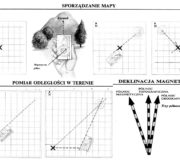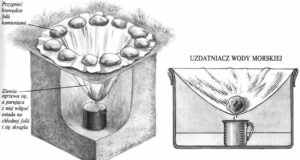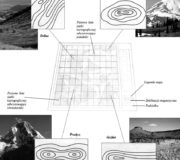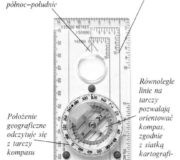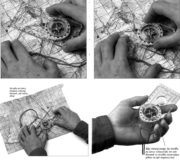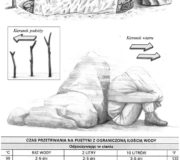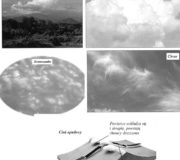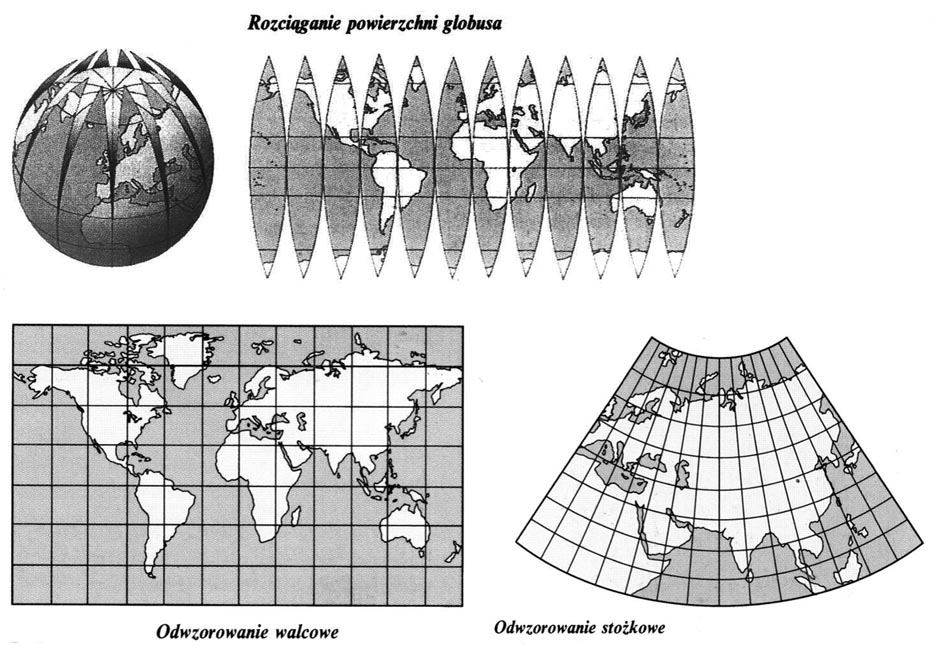 Mapa ma możliwie dokładnie przedstawić na płaszczyźnie wybrany wycinek wypukłej powierzchni Ziemi. Każde rzutowanie kuli ziemskiej na płaską powierzchnię walca bądź stożka musi w ten lub inny sposób odkształcać obraz Ziemi. Dlatego też mapy nigdy wiernie nie oddają wszystkich cech danego terenu. Dotyczy to zwłaszcza większych szerokości geograficznych. Jednym z najlepiej znanych odwzorowań kartograficznych jest rzut Merkatora stosowany powszechnie przy wykreślaniu map morskich.
Mapa ma możliwie dokładnie przedstawić na płaszczyźnie wybrany wycinek wypukłej powierzchni Ziemi. Każde rzutowanie kuli ziemskiej na płaską powierzchnię walca bądź stożka musi w ten lub inny sposób odkształcać obraz Ziemi. Dlatego też mapy nigdy wiernie nie oddają wszystkich cech danego terenu. Dotyczy to zwłaszcza większych szerokości geograficznych. Jednym z najlepiej znanych odwzorowań kartograficznych jest rzut Merkatora stosowany powszechnie przy wykreślaniu map morskich.
Rozciąganie powierzchni globusa – Jeśliby powierzchnię globusa rozciąć wzdłuż południków i płasko rozciągnąć, między kawałkami w pobliżu biegunów występują szerokie przerwy. To właśnie konieczność ,,zapełnienia” tych przerw na płaskich mapach powoduje zniekształcenie obrazu Ziemi.
Odwzorowanie walcowe – Jednym z rodzajów odwzorowania walcowego jest siatka Merkatora. W tym odwzorowaniu powierzchnię globusa rzutuje się na walec przylegający do kuli wzdłuż równika. Po jego rozwinięciu otrzymujemy płaską mapę. Jest to odwzorowanie wiernokątne, które zachowuje kąty proste między południkami i równoleżnikami. Jednak rzut Merkatora nie oddaje wiernie powierzchni. W miarę oddalania się od równika zwiększają się odległości między równoleżnikami, co odkształca wielkość powierzchni, zwłaszcza obszarów położonych na dużych szerokościach geograficznych (okolobiegunowych).
Odwzorowanie stożkowe – Istnieje wiele sposobów rzutowania kuli ziemskiej na powierzchnie o różnych właściwościach, wadach i zaletach. Powyższa mapa powstała przez rzutowanie globusa na stożek styczny do kuli. Odwzorowanie stożkowe często stosuje się przy wykreślaniu map różnych części świata umieszczanych w atlasach. Również w wypadku rzutowania na stożek powstają odkształcenia, zwiększające się wraz ze zbliżaniem do podstawy stożka; nie są one tak wielkie, jak przy wielu innych odwzorowaniach.
